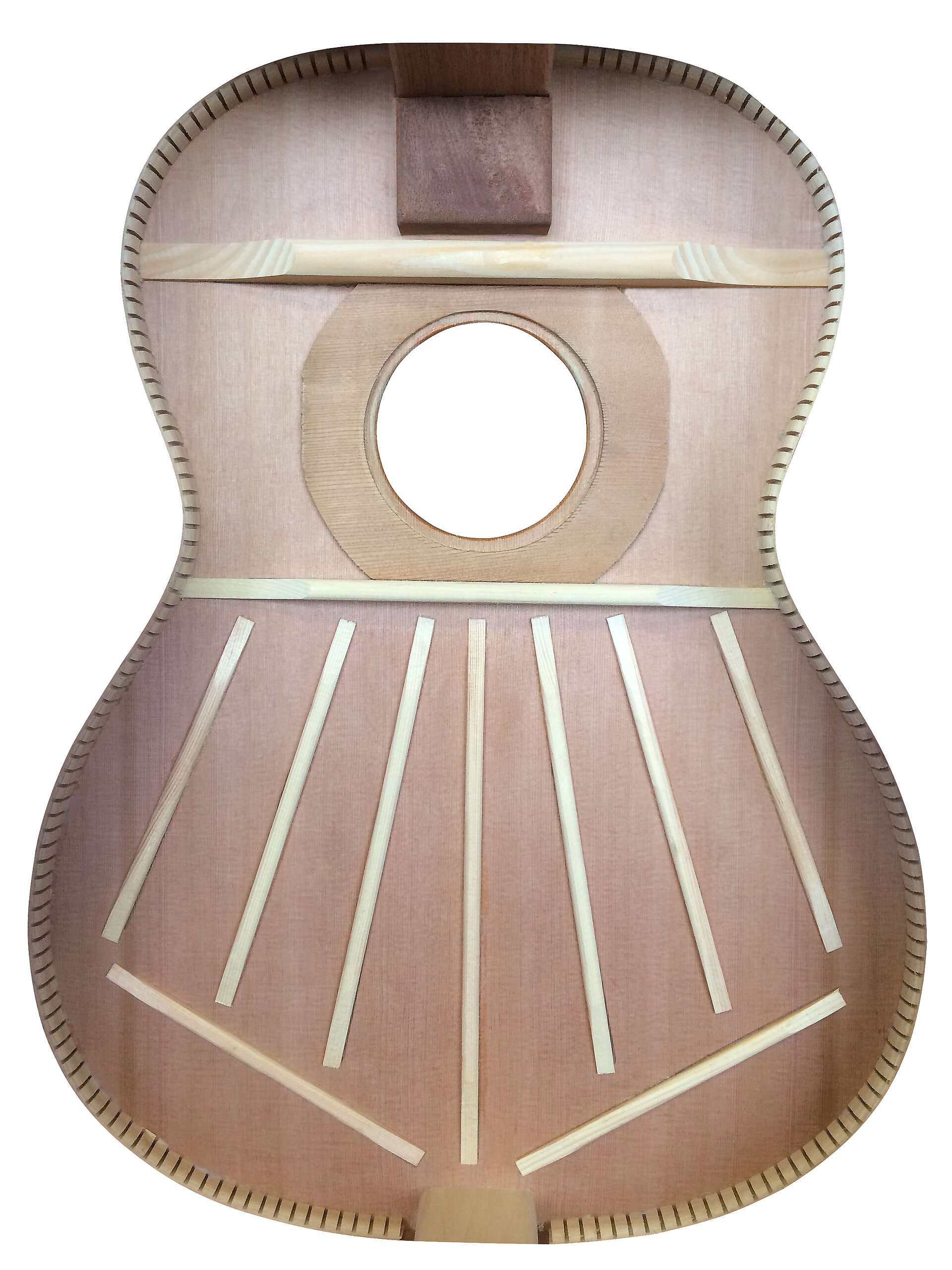Bracing according to Torres
We owe the acoustic guitar as we know it today primarily to Antonio de Torres (Spain, 1817 to 1892) (see History of the Guitar). Antonio de Torres was a skilled carpenter and guitar maker. He was the innovator behind the new Spanish guitar. The top of a guitar is 70-80 percent responsible for the tone, as it is basically the only surface on the guitar that can vibrate freely. Torres revolutionized guitar construction. His method of construction is still practiced today.

Compromise between stability and sound
From the very beginning of the guitar’s history, makers have attempted to strike the perfect balance between sound and design. The guitars before his time were characterized, by small and narrow bodies. This was because the measures of size and thickness of the top had to be right, otherwise it would collapse and crack. The strips on the inside of the top were arranged crosswise and were much wider than the strips of Antonio de Torres' model. This allowed Torres' guitars to increase significantly in sound, as the top could resonate for more harmoniously. The narrower and more ornamental strips on the top allowed them to become much more stable.
Without top strips, the top of a classical guitar would be extremely fragile due to the wood warping easily with temperature changes. Torres designed a five- to seven-fan system that was symmetrically arranged. This allowed Torres to build a larger body than his predecessors, thus satisfying the desire of musicians and listeners for louder instruments with more projection. In addition, the fan bar system was added, in which the top could vibrate much more harmoniously due to the fine, transverse bracing. The manner in which the guitar was assembled had its main point of intersection between the neck and body came at the eighth to ninth, or at the thirteenth to sixteenth fret. This resulted in a completely different pull of the strings on the top.
Important for all types of guitars
The importance of Torres’ work in developing the steel-string guitar is often overlooked, however, due to the way we think in "nylon string" and "steel string" schools exclusively. However, considering that this distinction did not even exist until the beginning of the twentieth century, when all guitars used gut strings made from animal intestines, his influence on the guitar in general becomes clearly evident. The "Torres guitar" developed its particular sound through special overtones, which allows them to produce an incredible variety of sounds and harmonics.
